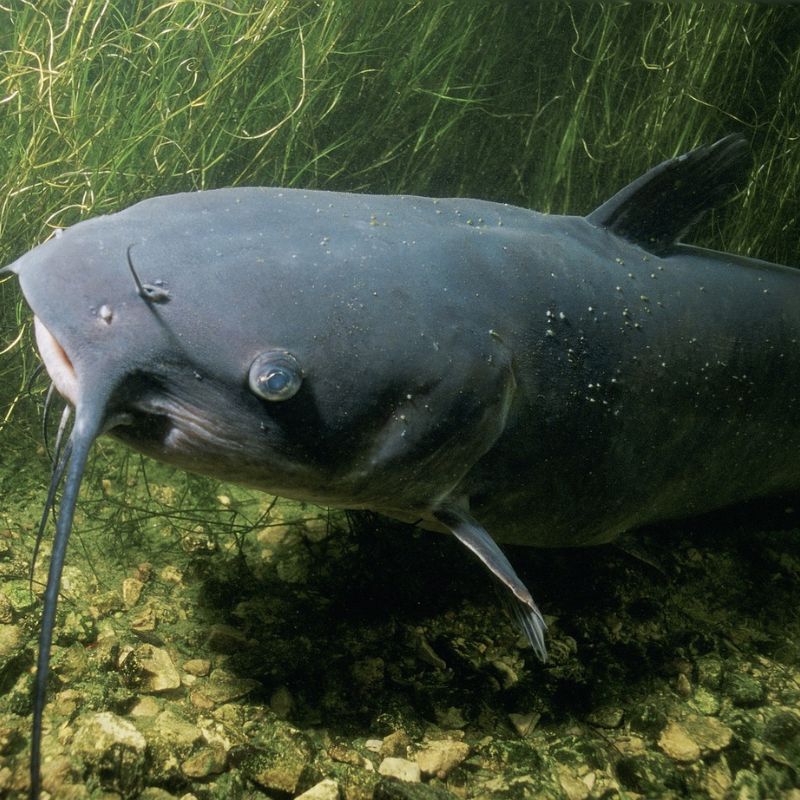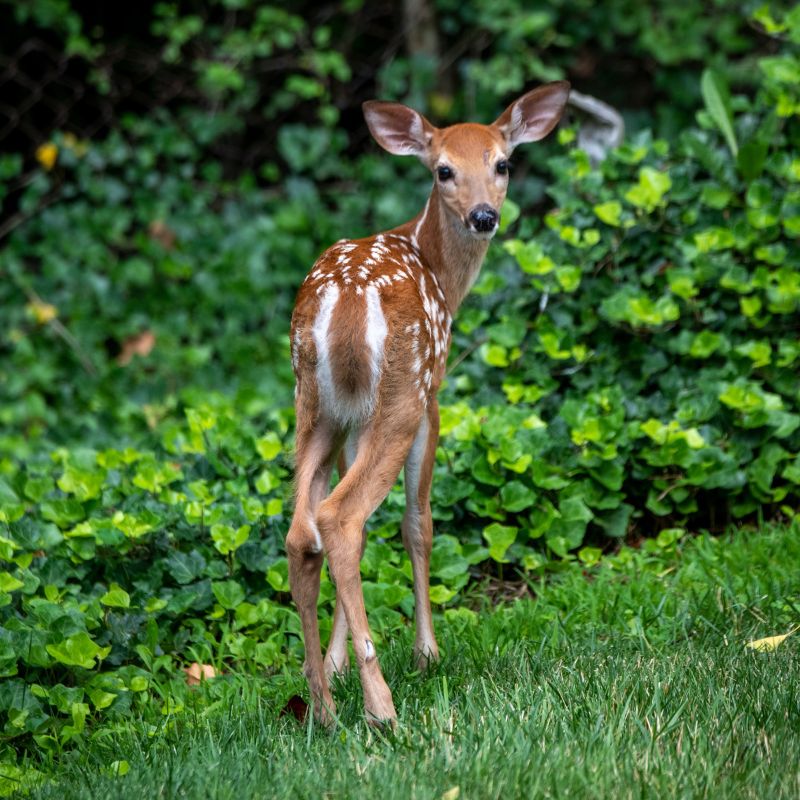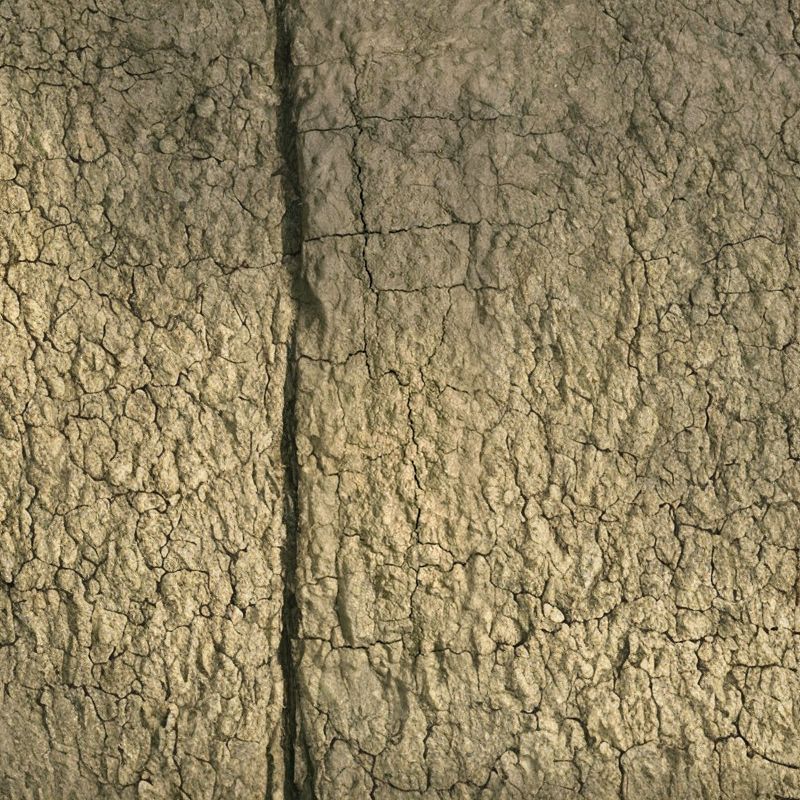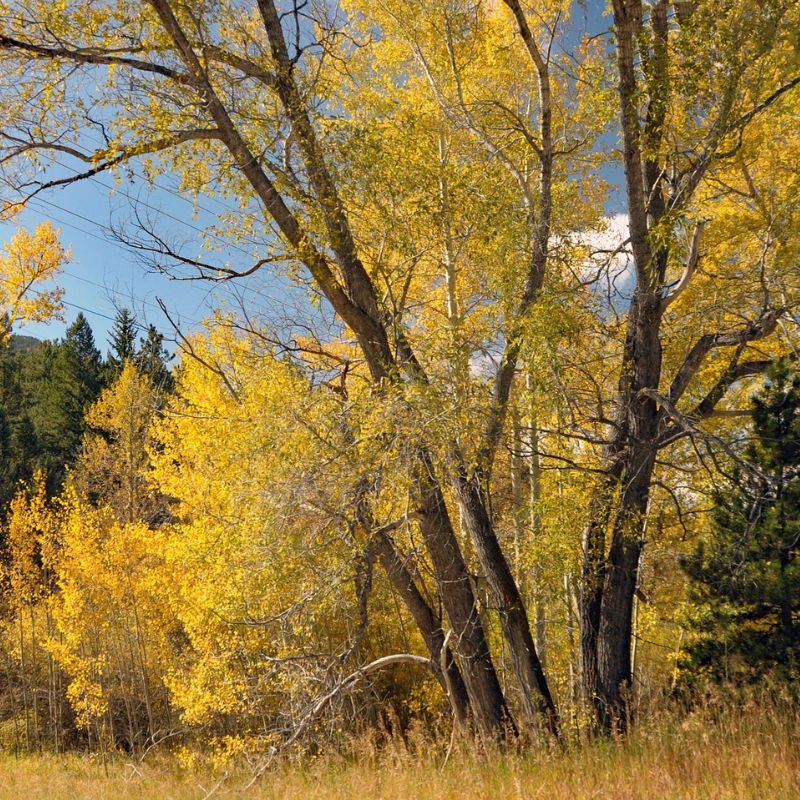Explore the Fascinating History of Nebraska
Take our Alabama Trivia Quizzes for a Chance to Win a 6-Month Subscription to History By Mail!

The History of Nebraska
Journey Through Nebraska Trivia
Welcome to our Nebraska history and trivia page, presented by History By Mail. Join us as we delve into the captivating past and captivating culture of the Cornhusker State. From pioneers on the Oregon Trail to the iconic Chimney Rock, we'll uncover some of Nebraska's hidden gems and put your knowledge to the test with entertaining quizzes. Let's embark on our journey through Nebraska's history and trivia together.
The State of Nebraska is a captivating destination with a diverse history and distinct cultural heritage. From the early days of Native American tribes and the westward expansion of settlers to the establishment of agricultural communities and the creation of the Union Pacific Railroad, Nebraska has played a significant role in shaping the fabric of American history. Today, the state is celebrated for its vast prairies, sweeping plains, and warmhearted residents who embody the spirit of the Midwest.
Facts about Nebraska
State Name: Nebraska
State Abbreviation: NE
Capital: Lincoln
Name Origin: The name of this state derives from Native American terms that signify "calm water." These words specifically refer to the Platte River, which traverses the state.
Nickname: The Cornhusker State
Statehood: March 1, 1867 (37)
State Motto: Equality before the law
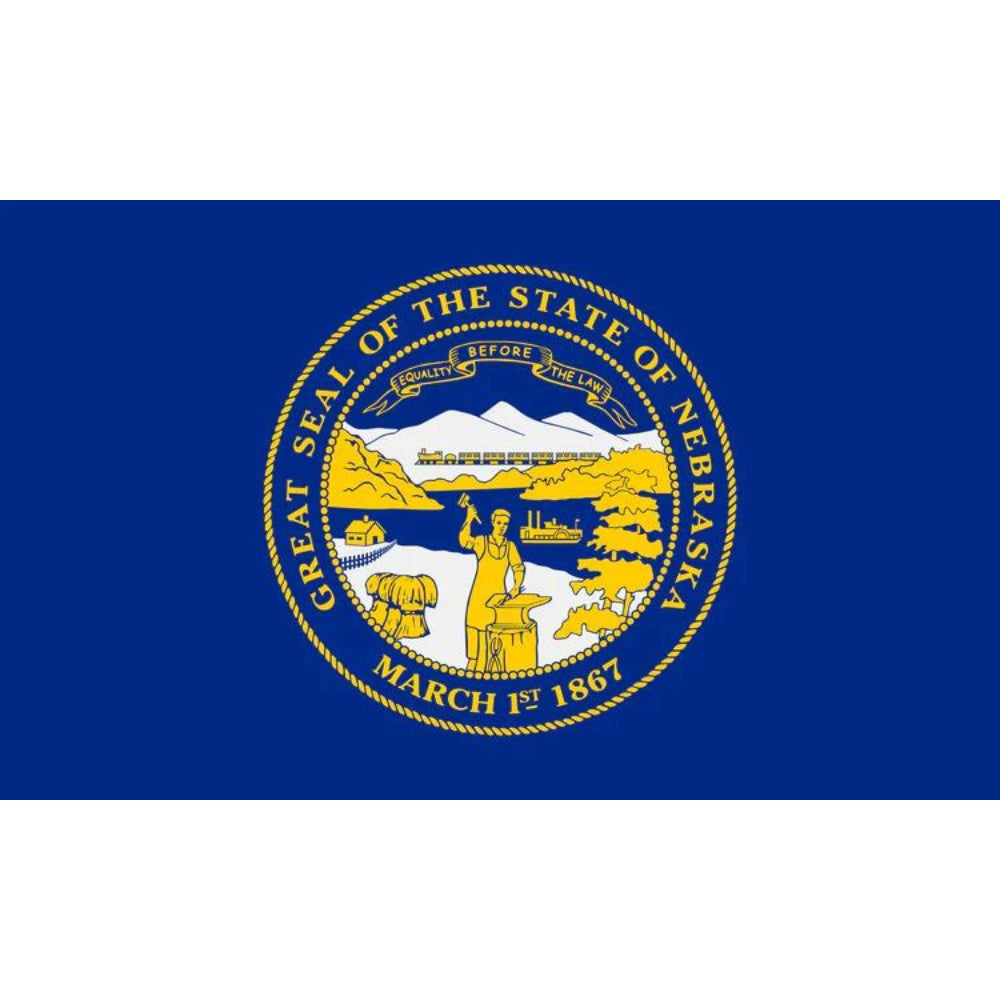
Nebraska's Flag
The Nebraska state flag was officially adopted in 1925 and showcases a field of blue with the state seal in the center. The seal features a golden sun rising over the Rocky Mountains, with a steamboat sailing on the Missouri River. Surrounding the seal are the words "Great Seal of the State of Nebraska" and the date "March 1, 1867," signifying the state's admission into the Union.
Nebraska's Great Seal
Nebraska's State Seal, designed by Isaac Wiles and adopted in 1867, serves as the official emblem of the state. Wiles, a prominent artist, incorporated various elements into the seal to represent Nebraska's unique identity.
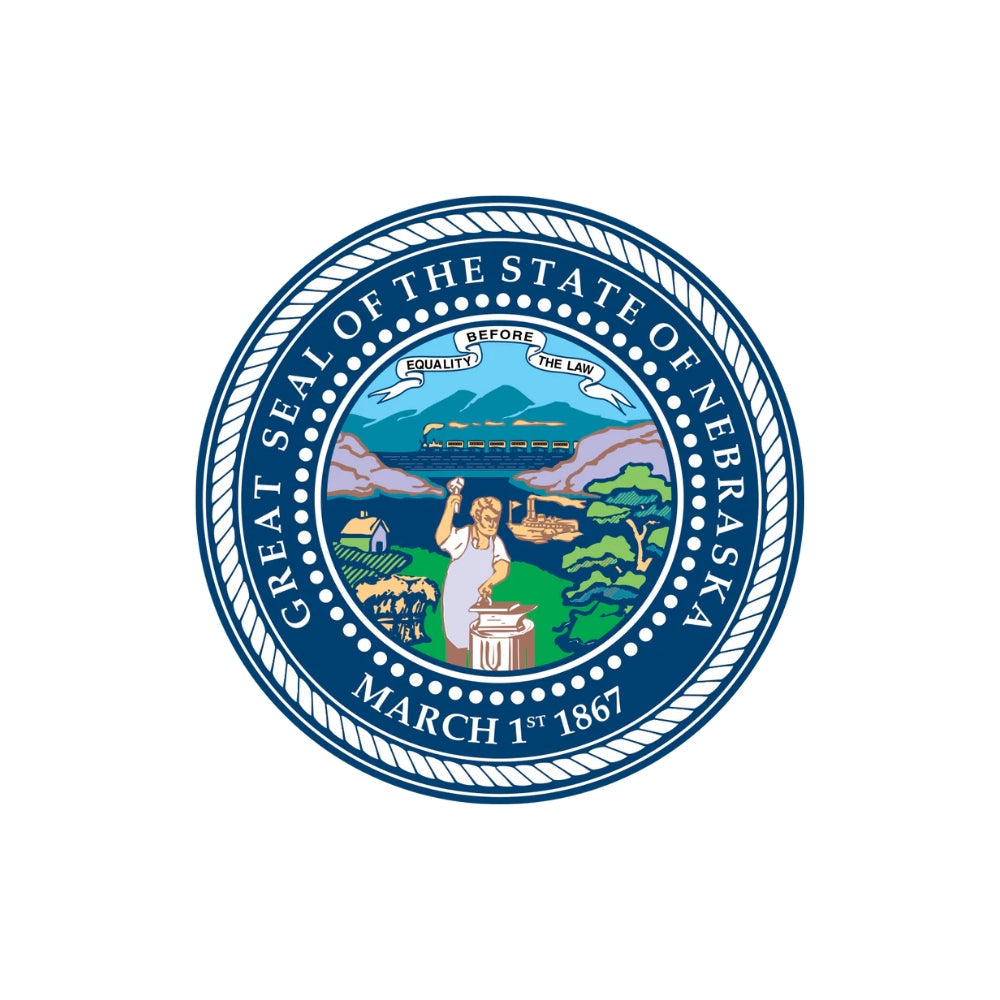
--- State Trivia #1 ---
History of Nebraska
Archaeological findings of spear points in Nebraska have provided evidence of human habitation in the region for over 13,500 years. Native American tribes, such as the Cheyenne, Lakota and Dakota Sioux, Omaha, Oto, Pawnee, Sauk, and Ponca, emerged many millennia after the arrival of the first inhabitants. Present-day Nebraska is still home to tribes including the Omaha, Ponca, Winnebago, Oglala Sioux, and Santee Sioux.
During the 1500s, French and Spanish explorers attempted to claim the land, but much of the area remained unexplored. In 1803, France sold the territory to the United States as part of the Louisiana Purchase.
The influx of settlers began with the arrival of pioneers on the Oregon Trail, a challenging 2,170-mile route that individuals traversed in covered wagons. In 1862, amidst the Civil War, the Homestead Act offered families the opportunity to claim 160-acre plots of land in the western regions, contingent upon building and farming the land for five years. The population of the Nebraska Territory swiftly grew, leading to its official statehood in 1867.
State Symbols
Fun Facts
- Nebraska has been the birthplace of notable individuals including former President Gerald Ford, former Vice President Dick Cheney, renowned philanthropist and businessman Warren Buffett, accomplished tennis player Andy Roddick, Academy Award-winning actress Hilary Swank, and legendary dancer Fred Astaire.
- The University of Nebraska State Museum proudly exhibits the largest mammoth skeleton on public display, affectionately nicknamed "Archie."
- Chimney Rock, a slender stone spire located in Scotts Bluff, stood as a prominent landmark for pioneers journeying westward. Composed of volcanic ash and clay, this natural marvel was shaped over time by erosion.
- Around 12 million years ago, a volcanic event resulted in the demise of various animals, including saber-toothed deer, raccoon dogs, and giraffe-like camels. Today, the Ashfall Fossil Beds in northeastern Nebraska offer a glimpse into the past through the fossilized remains of these ancient creatures.
- While England has Stonehenge, a renowned mystical circle of stones, Nebraska boasts its own unique attraction called Carhenge. This Stonehenge replica is created entirely from old cars and stands proudly in Alliance, showcasing the state's creative and artistic spirit.
--- State Trivia #2 ---

Things To Do in Nebraska
- Explore Omaha's Henry Doorly Zoo and Aquarium: Known as one of the best zoos in the world, this attraction offers a wide array of exhibits and interactive experiences, including the Desert Dome, Lied Jungle, and the Scott Aquarium.
- Visit Chimney Rock National Historic Site: Marvel at the iconic rock formation that served as a landmark for pioneers on the Oregon Trail. Take in the scenic views and learn about the history of westward expansion.
- Discover the Sandhills: Experience the unique landscape of the Nebraska Sandhills, a vast expanse of grass-covered sand dunes. Explore hiking trails, go birdwatching, or take a scenic drive through this picturesque region.
- Immerse yourself in history at the Strategic Air Command & Aerospace Museum: Located near Ashland, this museum showcases aircraft and exhibits related to the United States Air Force and the Strategic Air Command. Learn about aviation history and explore interactive displays.
- Enjoy the beauty of the Platte River: Take a scenic float trip or go kayaking along the Platte River, known for its stunning natural beauty and abundant wildlife. It's an excellent opportunity for birdwatching, fishing, or simply enjoying the serenity of the outdoors.
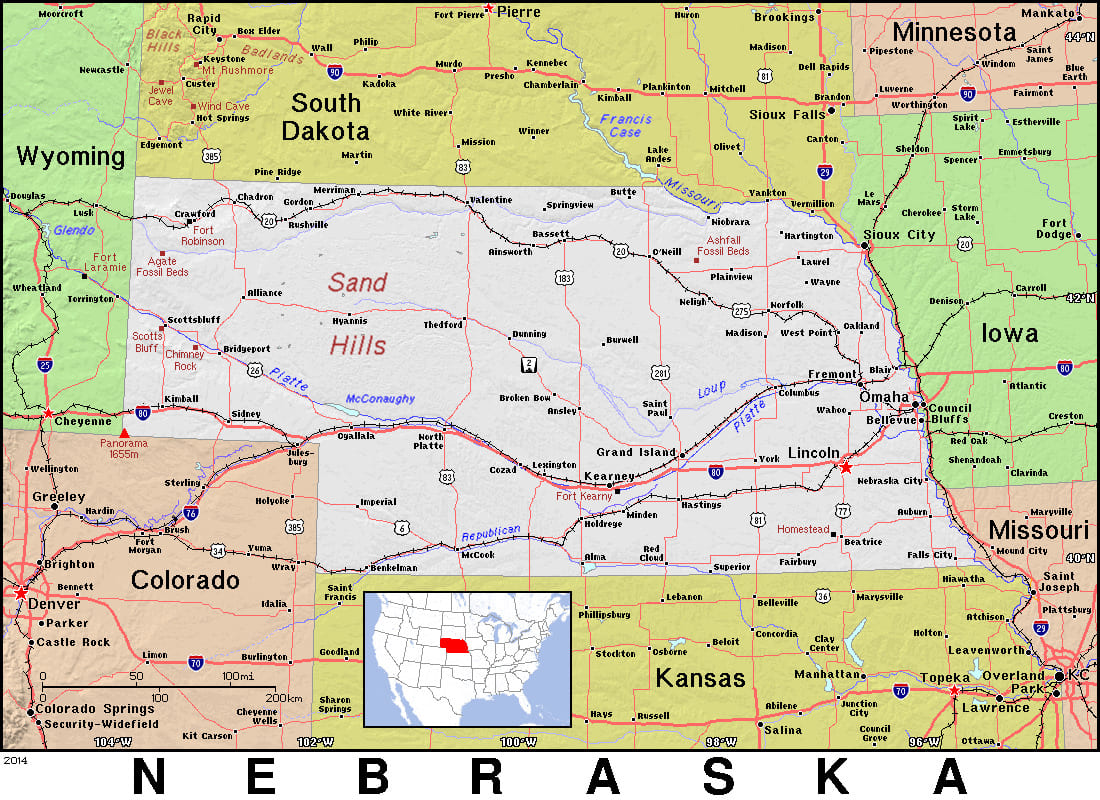
General Map of Nebraska
Nebraska shares its borders with South Dakota to the north, Iowa and Missouri to the east, Kansas to the south, Colorado to the south and west, and Wyoming to the west. The state can be divided into two primary regions: the Dissected Till Plains and the Great Plains.
Famous People From Nebraska
--- State Trivia #3 ---
FREQUENTLY ASKED QUESTIONS (FAQ) ABOUT NEBRASKA
Nebraska's name comes from the Otoe Native American word "Nebrathka," which means "flat water" or "broad water." This is a reference to the Platte River that runs through the state and its relatively flat terrain.
Nebraska was admitted to the Union on March 1, 1867, as the 37th state. Its admission was part of the Compromise of 1850, which aimed to balance the number of free and slave states. The Kansas-Nebraska Act of 1854 allowed settlers to decide whether to allow slavery within their borders, leading to significant debates and conflicts in the region.
Nebraska's state slogan is "The Cornhusker State." This nickname originated in the 19th century when Nebraska was known for its abundant corn production. The term "Cornhusker" comes from the way farmers used to husk corn by hand. It symbolizes the state's strong agricultural heritage and its hardworking, resilient population.
Nebraska played a significant role in the history of aviation. The Wright brothers established their flying school in Omaha in 1910, training the first military pilots there. Additionally, Eppley Airfield in Omaha was the site of the world's first night flight in 1927. This history showcases Nebraska's contributions to aviation advancements.
Related Resources
- Official Website of the State of Nebraska: The official website provides information about the state government, services, tourism, business resources, and more. Visit: https://www.nebraska.gov/
- Nebraska Tourism Commission: Discover Nebraska's attractions, events, outdoor activities, scenic drives, and plan your visit to the state. Visit: https://visitnebraska.com/
- Nebraska State Historical Society: Learn about Nebraska's rich history, explore historical sites, access archival collections, and educational resources. Visit: https://history.nebraska.gov/
- Nebraska Game and Parks Commission: Explore Nebraska's outdoor recreation opportunities, state parks, wildlife management areas, fishing, hunting, and conservation initiatives. Visit: http://outdoornebraska.gov/
- Nebraska State Capitol: Discover the architectural marvel of the Nebraska State Capitol and learn about its history, artwork, and guided tours. Visit: https://capitol.nebraska.gov/
- University of Nebraska-Lincoln: Access resources, programs, and information about the University of Nebraska-Lincoln, a leading educational institution in the state. Visit: https://www.unl.edu/
- Nebraska State Museum: Explore the natural and cultural history of Nebraska through exhibits, educational programs, and research at the Nebraska State Museum. Visit: https://museum.unl.edu/
- Visit Omaha: Plan your visit to Omaha, Nebraska's largest city, and discover its attractions, dining, entertainment, and events. Visit: https://www.visitomaha.com/

